Jōnangū|城南宮
Overview

A lovely shrine located in southern Kyoto, Jōnangū is a pleasant getaway from the more crowded shrines and temples in the city center. With five separate gardens surrounding the main shrine area, visitors are able to enjoy a variety of natural offerings and take a relaxing stroll through the precincts enjoying whatever flowers are in season – though Jōnangū is particularly famous for its weeping plum blossoms in late winter and early spring. The gods of the shrine are said to have control over direction-based luck, so those about to move or take a trip might want to stop by and offer a prayer.
With five separate gardens surrounding the main shrine area, visitors are able to enjoy a variety of natural offerings and take a relaxing stroll through the precincts enjoying whatever flowers are in season.
Features
Spring Mountain Garden, Heian Period-style Garden
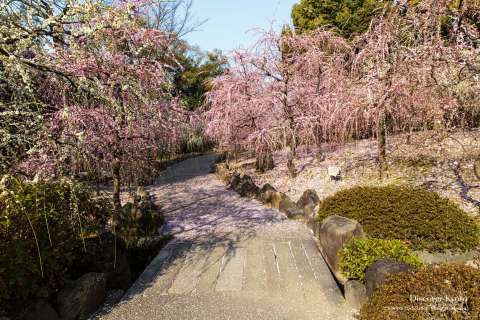
The most noteworthy features of Jōnangū are the five gardens placed around its shrine buildings. Beginning with the access point near the shrine’s omamori shop you enter the Haru no Yama (“Spring Mountain”) Garden, which offers a leisurely stroll over a small stream in a grove of camellia trees as well as the shrine’s famous weeping plum blossoms.
Continuing on takes you to the Heian Period-style Garden, which is home to a serene pond as well as a babbling brook that makes its way through lush moss and a wisteria trellis where the shrine holds its twice-annual Kyokusui no Utage, a recreation of a Heian Period poetry game.
Muromachi Period-style Garden, Momoyama Period-style Garden, Jōnan Imperial Villa Garden
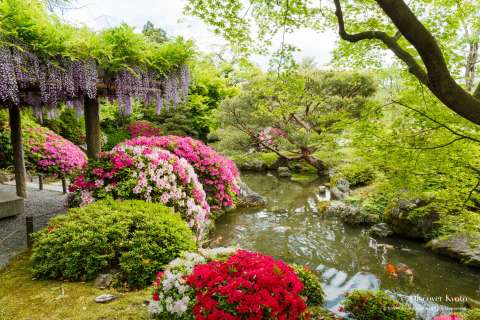
Across the “street” are the remaining three gardens. The Muromachi Period-style Garden boasts a lovely stone-filled pond filled with koi, a stone bridge, and a gorgeous wisteria trellis overhanging the water and rimmed with colorful azaleas. The Momoyama Period-style Garden opposite has a sweeping field that makes use of space with a high natural backdrop and a teahouse where you can enjoy green tea and a sweet, as well as sakura if you time your visit right. A walk behind the trees past beds of water-loving iris brings you to the Jōnan Imperial Villa Garden with its carefully sculpted line of conifers and waves of white stone shaped into a classic rock garden.
Kagura Dances
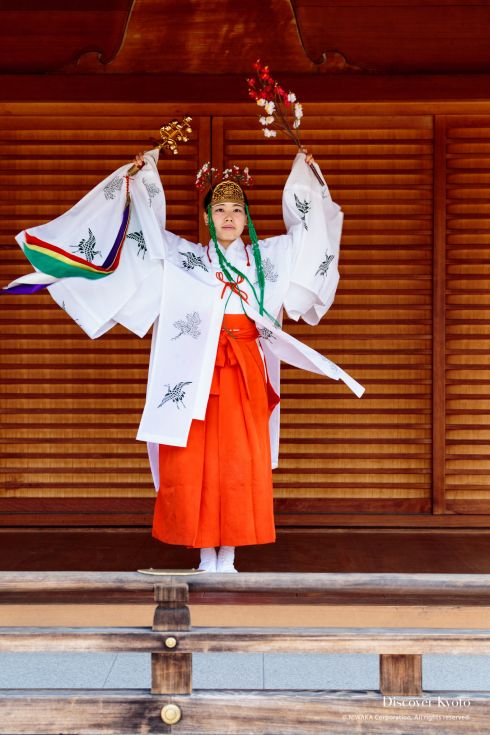
Though the shrine holds a variety of festivals throughout the year, it most noticeably is host to many kagura, sacred dances performed by miko shrine priestesses in distinctive white and red clothing. Wearing seasonal flowers on golden hair ornaments, these young women perform purifications using a special belled instrument and bless participants with plums, wisteria, or chrysanthemums, depending on the season. Held for several days each season and often during other festival periods, it may be an interesting experience to receive a kagura blessing from a Jōnangū priestess.
The One-Inch Boy
A classic Japanese tale tells the story of Issun-bōshi, a boy only three centimeters tall born to an elder couple who prayed for a child “no matter how small”. When he left home to seek adventure Issun-bōshi used a soup bowl for a boat, chopsticks for oars, and a needle for a sword, sailing down the river until he met a wealthy lord, defeated an oni, and eventually wed a lovely princess. Jōnangū claims the river from this tale to be the one near their shrine, and a cute mascot character of Little One-Inch can be found in front of the main hall in his tiny soup bowl boat.
History
Said to trace its history back to the 8th century, Jōnangū claims to have been founded when the capital was moved to Kyoto by Emperor Kanmu in 794. Enshrining three deities, (Kuni no Tokotachi no Mikoto, Ōkuninushi no Mikoto, and Empress Consort Jingū), under the worship of Jōnan Ōkami, the shrine served to protect the capital from malign influences and to pray for the prosperity of the country.
Jōnangū first appears in records from the 11th century as the location of the detached palace of Emperor Shirakawa (1053 – 1129) and later Emperor Toba (1103 – 1156), both of whom took part in the practice of cloistered rule, ostensibly retiring from their positions but still ruling through others. The shrine was located within the Toba Detached Palace and considered a divine guardian of the palace grounds, as it was a common practice in those times for those with large estates to have Buddhist and Shinto altars within the precincts.
Serving also as a stop along the pilgrimage route to Kumano in the south, Jōnangū gained a reputation as a shrine to pray for protection against unlucky directions and for safe travels. Though this shrine was destroyed along with the detached palace, it was later rebuilt in the same area near the tombs of Emperor Shirakawa and two others.
A famous story from the Meiji Restoration period tells of an incident during the Battle of Toba Fushimi in which soldiers from the Satsuma domain set up their cannons in front of the sacred path to Jōnangū. Depicted in art with their flag fluttering in the wind from the cannon fire, it’s said that the Satsuma forces were aided to victory by the gods of Jōnangū shrine.
The current gardens were designed by famous landscape designer Nakane Kinsaku (1917 – 1995) in the 1960s.
Events
January 1st – 3rd | Purification Kagura Dances |
|---|---|
January 5th | Chōna Hajime |
January 20th | Yutate Kagura |
February 3rd | Setsubun |
February 11th | Seven Herbs Porridge Day (Nanakusagayu no Hi) |
February | Plum Blossom Kagura |
April | Hōyoke Taisai |
April 29th | Winding Stream Banquet (Kyokusui no Utage) |
May | Wisteria Kagura |
June 25th – 30th | Chinowa Kuguri, Hitogata Nagashi |
June 30th | Summer Purification (Nagoshi no Harae) |
July 1st – 7th | Summer Purification for Beloved Cars (Okuruma no Chinowa Kuguri) |
July 20th | Osuzumi Kagura |
September | Chrysanthemum Kagura |
October, 3rd Sunday | Jōnan-sai |
November 3rd | Winding Stream Banquet (Kyokusui no Utage) |
November 20th | Fire Festival (Hitaki-sai) |
Access
Address
〒612-8459 京都府京都市伏見区中島鳥羽離宮町7
| TEL | 075-623-0846 |
| FAX | 075-611-0785 |
| WEB | http://www.jonangu.com/ |
Admission
- General Admission: Free
- Garden Admission: ¥600
- Junior High School, Elementary School: ¥400
- Persons with Disabilities: ¥300
Hours
- General Admission: 9:00 – 16:30 (last admission 16:00)
Closed: No closing days
Transportation
- Kintetsu Line ⇒ Takeda Station ⇒ 15-20 minutes walking
- Karasuma Subway Line ⇒ Takeda Station ⇒ 15-20 minutes walking
- Takeda Station ⇒ Exit 4 ⇒ City Bus 南1, 南2, 南3 (South) ⇒ Jōnangū Higashiguchi Bus Stop
- Kyoto Station ⇒ Karasuma Exit ⇒ Boarding Area C4 ⇒ City Bus 19 for Jōnangū
Gallery
-
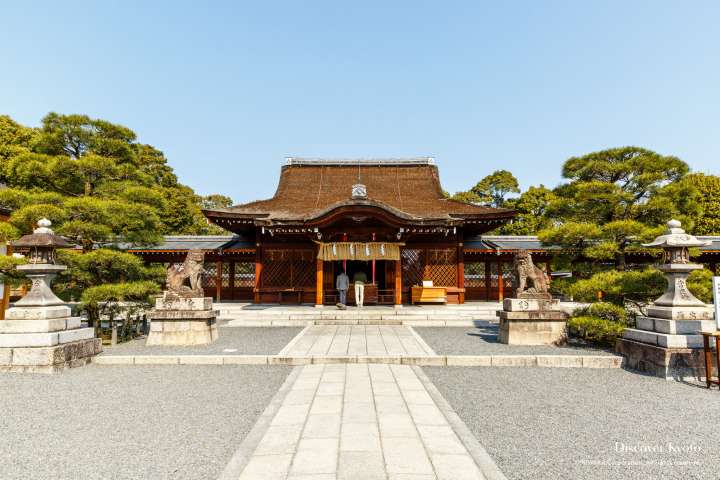


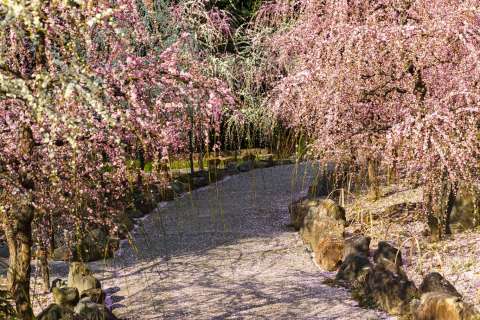
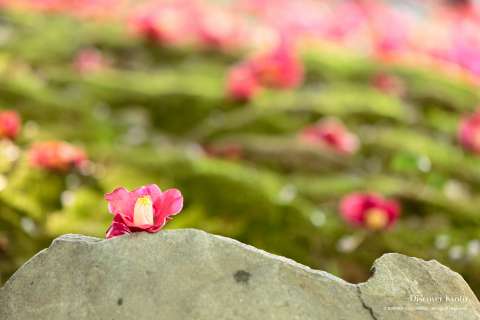 +15
+15
